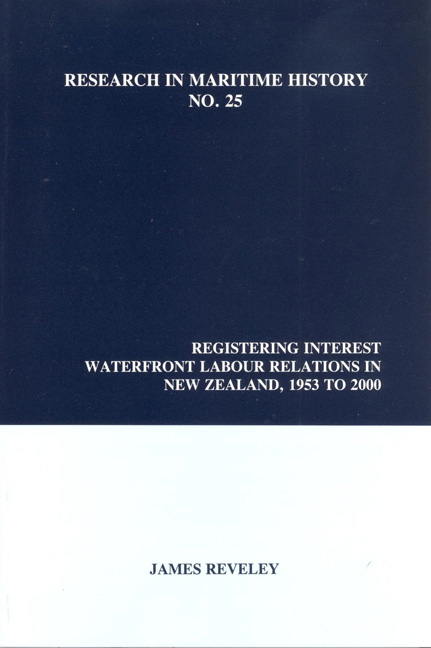Book contents
- Frontmatter
- Contents
- About the Author
- List of Figures
- List of Tables
- Acknowledgments
- Introduction
- Chapter 1 Unions and the Bureau System
- Chapter 2 The Waterfront Employers: Companies and Coordination Mechanisms
- Chapter 3 Labour Relations in the Conventional Cargo Era
- Chapter 4 Negotiating Technological Change
- Chapter 5 Labour Relations after Containerisation
- Chapter 6 Waterfront Labour Reform
- Conclusion
Chapter 1 - Unions and the Bureau System
- Frontmatter
- Contents
- About the Author
- List of Figures
- List of Tables
- Acknowledgments
- Introduction
- Chapter 1 Unions and the Bureau System
- Chapter 2 The Waterfront Employers: Companies and Coordination Mechanisms
- Chapter 3 Labour Relations in the Conventional Cargo Era
- Chapter 4 Negotiating Technological Change
- Chapter 5 Labour Relations after Containerisation
- Chapter 6 Waterfront Labour Reform
- Conclusion
Summary
The smashing of the Waterside Workers’ Union (WWU) in 1951 and the subsequent creation of twenty-six new government-sponsored local port unions dramatically changed the structure and complexion of waterfront unionism. This precipitant move sapped the strength of waterfront labour organisation almost overnight. Despite starting with many divisions, the new unions were not quiescent instruments of employer will but quickly adopted an oppositional approach towards the employers and in a short time regained the upper hand on the waterfront. A union's external strength resides primarily “in the external sanctions it can bring to bear on employers in negotiations.”1 By the same token, its internal strength derives from the ability to organise and control its members to ensure a stable membership of committed unionists and a robust form of organisation. As subsequent chapters show, key sources of external strength for the wharfies’ unions were employer fragmentation and the reliance of shipping companies upon quick vessel turnaround times. The unions could capitalise on these potential power resources only after they had shored up their internal strength by achieving control over key facets of the labour supply. This chapter explains how the bureau system's occupational registration scheme allowed them to do just that.
The Unions Regroup
The concomitant of the national union being deregistered was deregistration of all watersiders who previously had the legal right to work in the industry. Government granted employers the exclusive right to select new recruits to fill the empty vessels that were the new unions. This was a rare historical instance when employers alone decided the composition of unions. They excluded many deregistered watersiders whom they perceived to be militants or troublemakers, including a number who had been union officials. The excluded men were in effect expelled from the industry. The veterans of 1951 who were fortunate enough to get work on the waterfront again were required to join the governmentsponsored unions by dint of the policy of compulsory union membership.
- Type
- Chapter
- Information
- Registering InterestWaterfront Labour Relations In New Zealand, 1953 To 2000, pp. 7 - 34Publisher: Liverpool University PressPrint publication year: 2003



